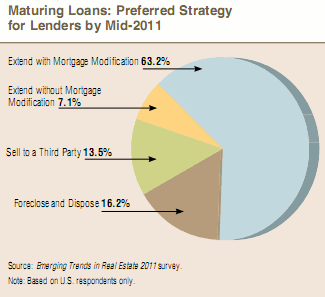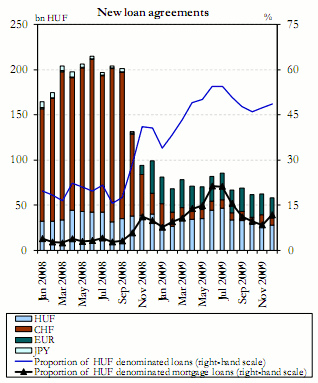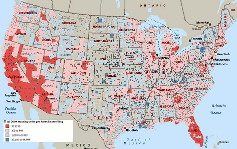You are currently browsing the tag archive for the ‘housing’ tag.
A candid survey of property professionals by the Urban Land Institute and PricewaterhouseCoopers serves as a valuable resource for those interested in the future of the US real estate market. The report is sprinkled with colourful quotes from property investors—the downturn produced “a deep canyon” separating “trophy” and “trash” assets, “with a lot more trash”—as well as quantitative expectations for the quarters ahead.

Even though it was conducted before the furore over faulty foreclosure processes hit fever pitch, the survey suggests that lenders are not in a hurry to foreclose on delinquent borrowers. Still, next year more repossessed properties are expected to be put up for sale, not least because buyers “realise they should not expect giant discounts on everything that comes to market,” according to the survey. Now, with the spectre of legal action and forced repurchases haunting distressed properties, activity may not bounce back as quickly as expected.
The headline conclusion from the IMF’s latest Global Financial Stability Report is good news for banks. The organisation trimmed US$500bn from its estimate for global bank writedowns between 2007 and 2010. Lenders are now expected to write down asset values by US$2.3trn over this period, less than the US$2.8trn projected in the IMF’s analysis six months ago.
Although conditions are improving, many risks remain. One particularly worrying risk, the IMF highlights, is exposure to commercial real estate. In the US, for example, the peak in writedowns for corporate and consumer loans has already been reached, according to estimates from the IMF and Federal Reserve. Loan losses on residential real estate loans, meanwhile, should peak in the third quarter of this year. Writedowns on commercial real estate loans, however, are expected to keep rising until the second half of 2011.

The latest report on financial stability from the Hungarian central bank features some arresting statistics on foreign-currency lending in the country. Hungarian households’ enthusiasm for Swiss franc-denominated loans played a major role in deepening the country’s recession, as a retreat from risky assets punished currencies like the forint and bolstered safe havens like the franc.

New foreign-currency loans in Hungary have slowed markedly in recent months, with borrowers favouring forints. Still, franc, yen and euro-denominated loans comprise some 70% of outstanding loans.
Even if all foreign-currency lending stopped from today, the outstanding stock of these loans would fall by only around 13% by the end of 2011, according to the central bank. With such a large share of the population exposed to foreign-exchange risk, “the vulnerability of the financial system is decreasing only gradually,” the bank laments.
The majority of data and analysis at Financial Services Briefing is available only to subscribers. Each week, a small share of content from the service is made available to non-subscribers.

Despite dire economic conditions in Mexico—the EIU expects the economy to contract by 7.1% this year—the country’s banks are performing commendably, although some are distinguishing themselves more than others.
Among the country’s five largest lenders, Banamex nearly doubled net profits in the first nine months of 2009. At the other end of the scale, HSBC México saw earnings fall by 60% over the same period. But even the worst-performing big banks in Mexico can take some comfort in capital cushions and loan-loss ratios that would be the envy of most lenders north of the border. And with housing shortages supporting the domestic property market—another major difference to the situation in the US—mortgage lending will provide a welcome source of growth in the years ahead.
Read more at Financial Services Briefing: “A hesitant recovery” (November 25th)
 Cartographers may enjoy comparing a new map of US foreclosure statistics from RealtyTrac with some of the many maps created to track bank failures.
Cartographers may enjoy comparing a new map of US foreclosure statistics from RealtyTrac with some of the many maps created to track bank failures.
The number of collapsed banks recently rose above 100, and it’s no surprise that failed lenders and foreclosed homes produce similar geographical patterns. Any attempt to map America’s financial pain seems to result in vivid red splotches across the west, southwest and southeast.
 Borrowers’ appetite for loans in foreign currencies has “primed a bomb” that threatens the economies of central and eastern Europe, according to a story in The Economist this week. A striking chart illustrates the trend; more than half of mortgages in 2008 were denominated in foreign currencies—primarily Swiss francs or euros—in Latvia, Estonia, Hungary, Lithuania and Romania.
Borrowers’ appetite for loans in foreign currencies has “primed a bomb” that threatens the economies of central and eastern Europe, according to a story in The Economist this week. A striking chart illustrates the trend; more than half of mortgages in 2008 were denominated in foreign currencies—primarily Swiss francs or euros—in Latvia, Estonia, Hungary, Lithuania and Romania.
As recession puts these countries’ currencies under pressure, borrowers have seen their liabilities explode. A consultant cited in the article reckons that Hungarians who took out foreign-currency loans in 2007 are now paying 70% more than they did (if they pay at all).
Austrian and Swedish banks are particularly exposed to the problems in teetering economies on Europe’s eastern edge. Fearing collateral damage from the foreign-currency mortgage time bomb, access to these types of loans in the future is likely to be severely curtailed, if not outlawed outright. As an Austrian official notes, “we don’t want millions of people acting like little hedge funds.”

